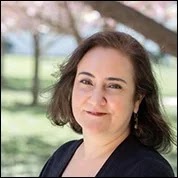Grinnell Desjarlais is the author of the novel Saving KC. He is also an activist supporting Native American communities. Born on the Rocky Boy's Indian Reservation in Montana, he lives south of Seattle, Washington.
Q:
What inspired you to write Saving KC?
A:
It was a spiritual experience. The book is based on Karen Carpenter's life. I
was surfing YouTube about the pandemic's beginning when I found a music video
of Carpenters in concert and a studio recording. This sparked a renewed
interest in the group.
I
spent or should I say misspent my young life lost in drunken debauchery, so I
was unsure what had become of Karen Carpenter. She was my first crush on a
female singer (early ‘70s). We would have been the same age had she continued
to live.
As
I read several articles and books about her and the group, I realized that she
had been ignored, mistreated, and taken advantage of by nearly everyone in her
circle of friends, family, and record executives. I became upset that Karen was
treated with so little regard. This started her down the path of her
destruction.
Often,
I have read where many of Karen’s fans have wondered what It would have taken
to save her. What would that look like? This stirred something in me I could
not explain; some suggested that her spirit was channeling me.
Emotionally,
I was consumed; I had to do something. I started to write, not knowing where it
would go, as I had never written anything beyond communications for my
business. The first raw manuscript pieces were sent for editing within about
three months. I sent chapters for editing as soon as I finished them; I wrote
constantly, at work, at home, and waiting in traffic. I was obsessed.
Q:
How did you create your characters Kelly and Kaitlin, and how would you
describe the dynamic between them?
A:
Since Saving KC is historically fictional, I had to reach a point in her story
where I could veer off into fiction land. She was already deep in her pathology
when I changed direction.
The
creation of Kelly took a little more. I needed to put him in a situation where
he faced some dramatic, near-terminal situations, war, torture, and alcoholism.
I
brought more layers in as each character developed. I wanted the reader to
experience what the characters were exposed to, what it would feel like, how
they would react, and what the consequences would be. I had to set the stage
where they were equally damaged, unaware of impending doom in each case.
Kelly
and Kaitlin initially experienced compassion, then suspicion and mistrust in
each other’s motives, ultimately turning to respect and then love.
Q:
Did you know how the novel would end before you started writing it, or did you
make many changes along the way?
A:
I knew how I wanted the story to end, but I wasn’t sure how to get there.
Strangely enough, I started in the middle of the story. I wanted to explore
what their first meeting would look and feel like for them and the reader.
I
had sketched out what Kelly would need to go through before the meeting; this
took some time to develop in a back story. Establishing the meeting scene gave
me something to shoot for from the beginning to that point. Then, from the
meeting, I could aim for the ending I wanted.
Yes,
there were many directional changes. I sometimes let the characters go to see
where they would take me, and they will do that. I sometimes stopped them and
asked, “Why did you take us here?” Sometimes, there was a rewrite, but most
times, not.
Q:
What do you hope readers take away from the story?
A:
I wanted to express my compassion for Karen Carpenter and Kelly, too. I wanted
to display the resilience of all main characters in the story, how each had
lost hope but, in the end, found it. I also wanted to highlight the innocence
of youth when it collides with the harsh realities of the world.
I
also wanted to show how destructive wealth and fame can be. There is also a
spiritual component that I wanted to explore: one that offers redemption and
second chances but sometimes asks for sacrifices along the way.
Q:
What are you working on now?
A:
I am working on some short stories about a 10-year-old Native boy, following his
challenges with life and family. His stories contain family violence, abuse,
abandonment, and disconnection from previous generations through assimilation. Based
upon my life, this is written in a fictional format.
Q:
Anything else we should know?
A:
I decided that the ending in the original publication was not the one the story
needed. The truth is, I did not have the courage to give it the one it was
intended to have. The book has been re-released with a new ISBN number for the
hardbound, softbound, and audible versions. These have all been released
effective Sept. 17, 2024.
You
can visit the book website to learn more about this and me at www.savingkcthestory.com.
--Interview with Deborah Kalb
.jpg)



















